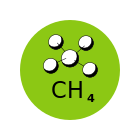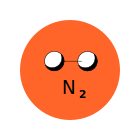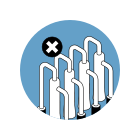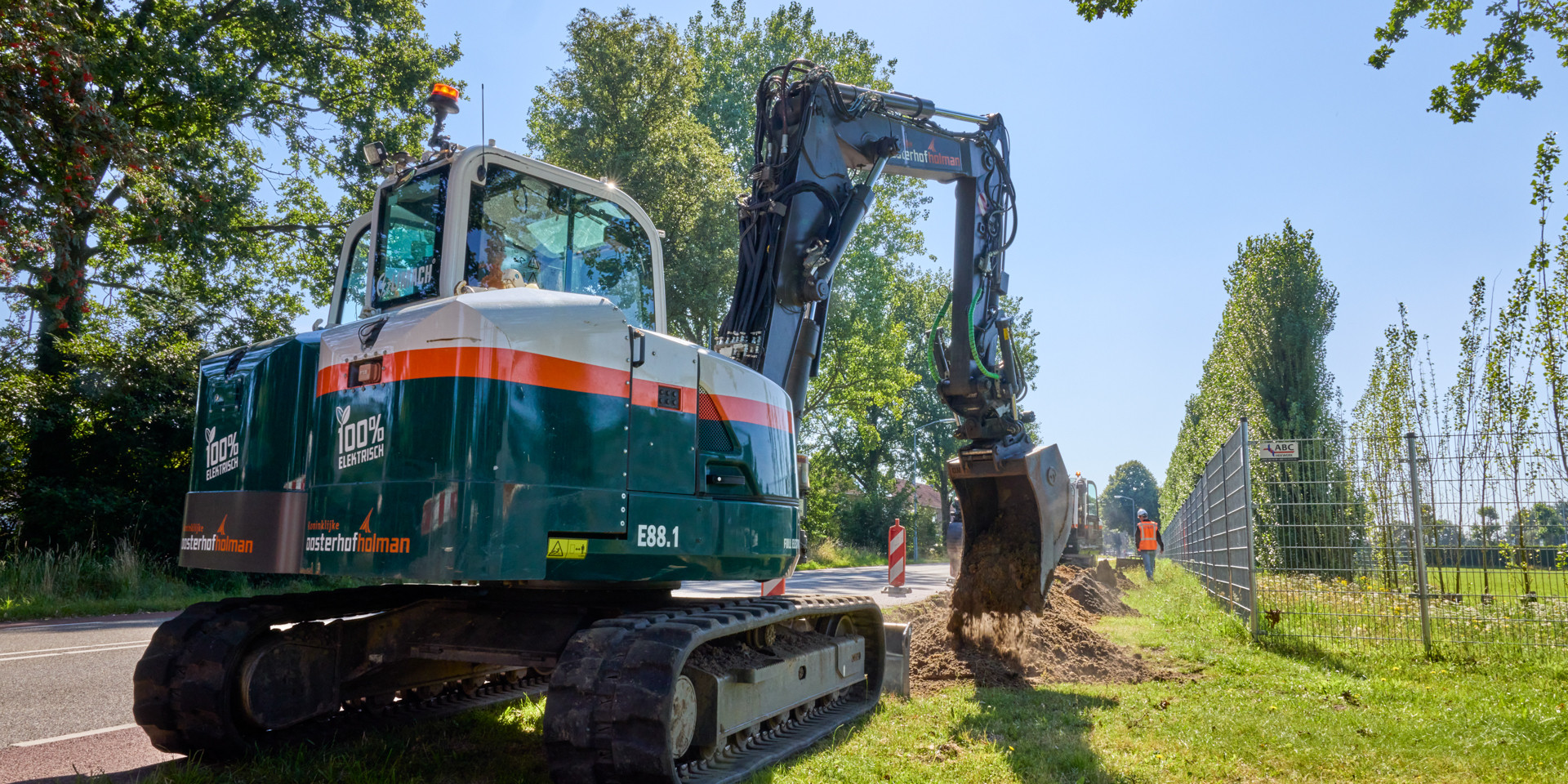
3.1 Strategy
The transmission of natural gas requires energy, energy we use to keep the gas grid at pressure, to blend natural gas with nitrogen, and to compensate for frictional losses during transmission. Gasunie uses natural gas and electricity for this. Burning this natural gas and generating this electricity produces CO2 and NOx emissions.
Furthermore, methane (natural gas) is emitted to the air during management and maintenance work on our infrastructure. Methane (CH4) is a potent greenhouse gas. We have to deal with so-called ‘fugitive emissions’ (natural gas losses due to leaking connections in Gasunie’s gas transmission network) and controlled emissions (gas vented from pneumatic regulators, depressurising compressors, gas vented during work).
We want to help society switch to a carbon neutral energy system, and we set the right example ourselves as well, by reducing both our energy consumption and methane emissions where possible. Only then will we be able to retain our social licence to operate. As a state-owned company, we have to be an example to follow.
3.2 Policy
Gasunie pursues an integrated policy for the reduction of CO2-related emissions. Our CO2e emission reduction policy applies to all Gasunie-operated energy-consuming assets in the Netherlands and Germany. These can also include assets owned by associate companies or third parties but operated by Gasunie. The policy also applies to future assets that fall into this definition.
Through to 2023, our policy revolved around emission reduction targets for 2030, with 2020 as the base year. As of 2024, the target in our policy has shifted to reaching net-zero emissions by the year 2045. Net-zero means cutting the volume of emissions to below 10% of the 2020 level, while offsetting remaining emissions through responsible carbon offsetting measures. Where possible, we do this based on criteria that are similar to those of the Science Based Targets initiative (SBTi). In evaluating our road to zero, we are going by emission data from 2023 as a well developed starting point. Where necessary, we recalculate cost and emission calculations based on this point of reference.
Distribution of Gasunie’s CO₂-related emissions (market-based, reference year 2023) across the various scopes
3.3 Action plans
This is how we reduce our scope 1 emissions:
5 Green gas is not covered by the system of guarantees of origin because there is no internationally recognised certification of green gas. At present, green gas certificates are accepted as ways to reduce scope 1 and scope 3 emissions, provided that a party is connected directly to the green gas supply and able to prove that.
This is how we reduce our scope 2 emissions:
Our head office’s annual carbon emissions
Gasunie is committed to emitting as little CO2 as possible, which includes emissions from the generation of the electricity we procure.
In order to calculate how much CO2 is emitted in the process of generating the electricity we procure, we, like most companies, use average emission factors. These provide an overall view of emissions in the Netherlands.
But we want to do more. We want to procure as much of the electricity we need at times with lots of sunshine or wind, because that is when there is a lot of renewable energy in the Dutch electricity production mix.
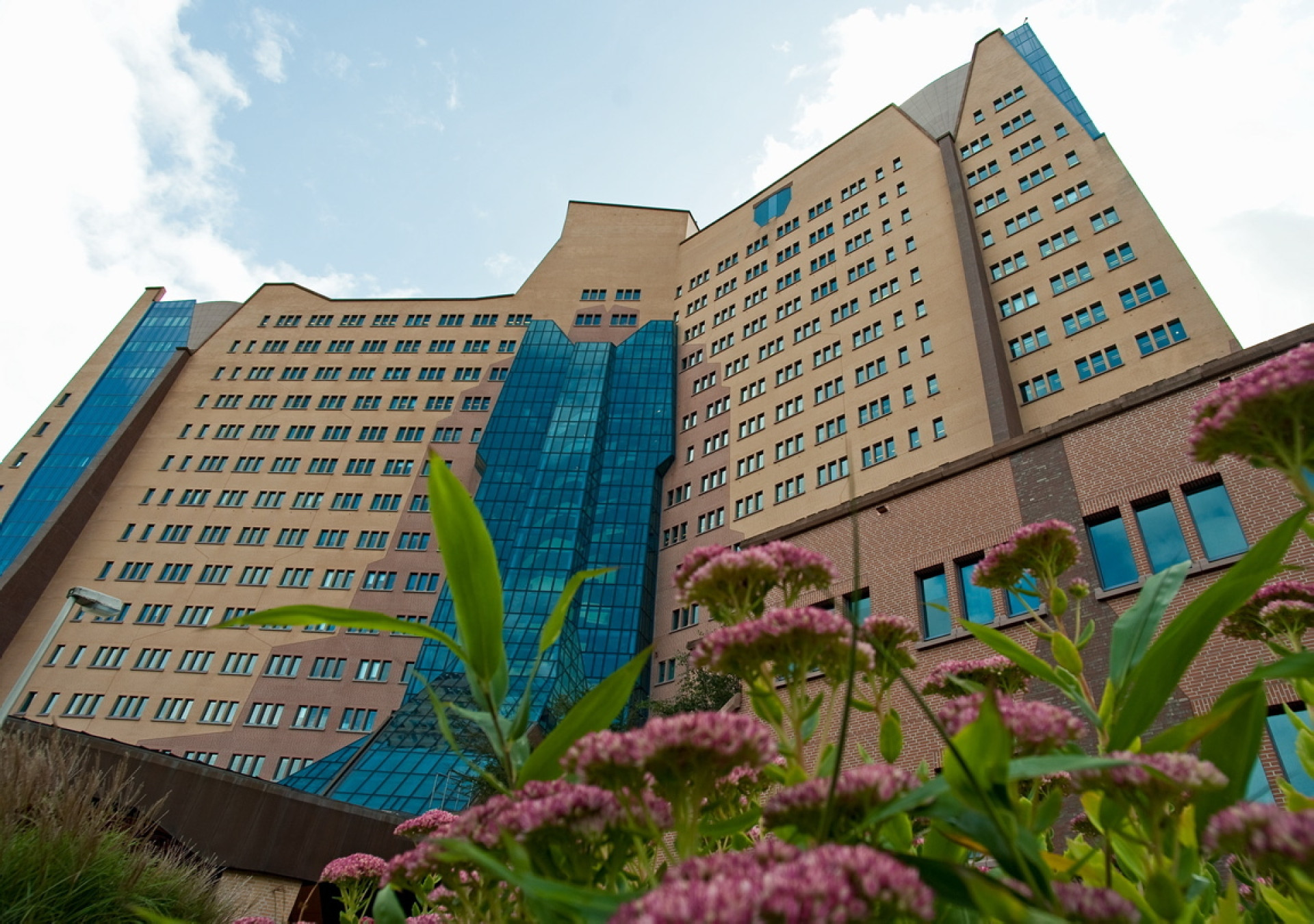
The first step in this direction is to check our electricity consumption every fifteen minutes and link the resulting readings to real-time data on the carbon intensity of the Dutch electricity production mix.
Knowing exactly when the electricity we need has the smallest carbon footprint sets us up for the next step: dynamic regulation of our power consumption. In other words, it allows us to shift our consumption from times of high carbon intensity to times of lower carbon intensity wherever possible.
The first step we have meanwhile taken over the past few months is to map the carbon footprint of our head office in Groningen by taking a snapshot of our footprint every fifteen minutes. We obtained the electricity production mix data from the National Energy Dashboard (NED.nl), a public online database that Gasunie has set up in partnership with TenneT.
It has already given us a far more realistic picture of our head office’s carbon footprint, and we are now looking into which electricity needs at the head office are suited for dynamic regulation.
We are also considering mapping the carbon footprint of other Gasunie sites in this way. Gasunie has a wide variety of sites, each with different characteristics. Some sites are, therefore, better suited for dynamic consumption regulation than others.
The obvious place to start would be the larger sites, such as Deventer, Ommen, Ravenstein, and Wieringermeer. We also believe that dynamic consumption regulation will deliver major carbon emission reduction gains within our network assets, such as our gas receiving stations.
Gasunie has thus far reported only a small part of its scope 3 emissions in its public report: emissions from business travel and commuting6 and from the production of the nitrogen we purchase. In 2024, we identified, for the first time, all of our scope 3 emissions across all categories as per the GHG protocol, using 2023 as the base year from which we start calculating reductions. In doing so, we aimed to collect as much high-quality, primary activity data and emission factor data from suppliers as possible.
6 The Gasunie Green Team (a group of Gasunie employees that initiates sustainability initiatives) is looking into the possibility of offering free public transport passes for the commute to and from work, as well as a tax credit for the purchase of a commuter bicycle.
The main components of our scope 3 footprint are:
- Emissions from purchased goods and services. These are made up mainly of pipeline maintenance activities to guarantee the safety and reliability of our network. Emissions from the production of the nitrogen we procure also constitute a significant part of this category.
- Emissions from capital goods. These are made up mainly of infrastructure development activities (procurement of steel pipes), and then especially projects with hydrogen and CO2 pipelines.
- Upstream emissions from energy consumed. Gasunie consumes a great deal of energy to keep the pressure in the high-pressure network at a constant level and this energy needs to be extracted in the beginning of the value chain, causing emissions there.
For our scope 3 emission calculation for 2023, we were able to obtain primary data that covers 41% of our scope 3 emissions. Wherever primary data was not available or not available in time, we used secondary data such as industry averages. The aim in the long term is to improve data quality and reduce data uncertainty, so as to ultimately be able to track our performance as effectively as possible.
After taking stock of our scope 3 emissions, we have put together a roadmap in 2024 with eleven measures for scope 3 emission reduction7 that we intend to implement along with details of the savings, costs, and implementation timeline of these measures. We have also set a scope 3 goal for 2030 and 2035, with 2023 as the base year, which can help us accelerate and steer our reduction plans. Overall, we believe we can reduce our scope 3 emissions by over 200,000 tonnes of CO2e8 by implementing the following set of measures.9
7 These goals were formulated using SBTI’s Target Setting Tool.
8 This figure was calculated based on the 2023 scope 3 footprint. If growth leads to scope 3 emissions increasing, this figure will have to grow accordingly.
9 The percentages are an indication only: they may change with time as new insights emerge.
This is how we intend to reduce our scope 3 emissions:
| Measure | Share of targeted scope 3 emission reduction |
|---|---|
| Creating zero-emission building sites by using zero-carbon or low-carbon construction equipment. The new engineering and works procurement strategy (see box) specifically seeks to partner with contractors and engineering firms in sustainability endeavours. Together with our partners, we want to adopt clean methods in building infrastructure for renewable energy. | approx. 35% |
| Switching to steel pipelines made using DRI technology that reduces carbon emissions caused by the extraction of iron from iron ore. Switching to steel produced using hydrogen-based DRI technology instead of natural gas-based DRI technology. | approx. 20% |
| Procuring goods with greater fuel efficiency, such as machine components with less frictional resistance. | approx. 15% |
| GTS uses nitrogen to convert high-calorific gas into low-calorific gas (called pseudo Groningen gas, or ‘pseudo G-gas’ for short), which is suitable for use by small-scale gas consumers in the Netherlands. Where possible, we get our nitrogen suppliers to decarbonise the energy they use to produce nitrogen by purchasing Guarantees of Origin (GOs). In 2023, Gasunie purchased GOs for 60% of our nitrogen supplies, and we plan to take this up to 100% green nitrogen procurement in 2024. | approx. 15% |
| Switching to pipelines made of scrap steel produced in electric arc furnaces. We are currently expecting a pilot delivery of the first batch of this circular steel from Mannesmann Line Pipe. Using recycled metal cuts emissions by as much as 80%. The first pilot will let us test feasibility and scale-up options, get a good understanding of the price difference between various supply options, and obtain verifiable data on the degree of circularity of this material. We are also negotiating with other suppliers for similar pilots. | approx. 7% |
| Replacing gas-powered compressors with electric compressors at Gasunie Deutschland (GUD). This avoids emissions from natural gas extraction. | approx. 5% |
| Installing heat pumps at gas receiving stations. This avoids emissions from natural gas extraction. | approx. 1% |
| Decarbonising power consumed by the IT systems running the trading platforms in which Gasunie holds a stake. | less than 1% |
| Reducing emissions from pipelines at GUD’s associate companies where GUD does not have operational control. | less than 1% |
| Reducing emissions at Gate terminal. Since Gasunie holds a 50% stake in Gate, its emissions fall into Gasunie’s scope 3 emissions instead of its scope 1 and 2 emissions. | less than 1% |
In our tendering process, we are going to make scope 3 emission reductions by suppliers and their deliverables/services/works a key factor in our assessment of tenders. Gasunie is working on guidelines on suppliers’ involvement in procurement. We have selected thirty strategic suppliers we want to team up with to tackle our emission hotspots. These parties supply materials (pipelines, valves, flanges, and static drivers) and operate in the contracting or engineering domain. In addition, several IT service providers and nitrogen-producing companies have also joined the programme. Gasunie’s collaboration with its suppliers is intended to result in:
- gaining a better understanding of the options for making the value chain more sustainable;
- identifying decarbonisation and sustainability projects, including the associated conditions and needs;
- having access to better data to calculate greenhouse gas emissions in the value chain, as well as reductions over time.
3.4 Resources
To cut emissions across all three scopes, we have developed work packages. Those packages that will deliver the greatest emission reduction at the lowest cost will be carried out first, which we assess based on an internal carbon price of a maximum of € 200 per tonne10 , i.e. the amount we are currently willing to spend to avoid a tonne of carbon emissions.
For scope 1, we have put together packages of measures that are comparable, and we assess the CO2e efficiency of each package as a whole. Conditions that are adequate for the whole package may not be adequate for individual measures within those packages. If a total package does not meet the requirements under our policy, we will check which individual measures do meet the criteria.
We work based on efficiency, including risk efficiency, as laid down in our risk matrix. Our risk matrix assigns a financial value to the impact of emissions, and we monitor that value on a periodic basis. We are constantly gauging whether there is a way to further tighten this goal while staying within the boundaries set by our risk-based asset management, such as by intensively looking for innovative technologies and working methods.
We put a lot of time into improving the completeness, accuracy, timeliness, and traceability of our reported emission volumes. In 2024, we have a programme running that is called Emissies in Kaart, which translates as ‘Emissions mapped out’. This programme is all about linking emission registration, reporting, and management software to our procurement software systems to get a constant and comprehensive view of our emissions across all scopes. This allows us to add further rigour to our annual plans wherever we can.
10 The Netbeheer Nederland trade association is currently looking into what would be fair internal carbon pricing. Until their findings are revealed, they go by a price of € 150/tonne.
3.5 Risks and opportunities
Based on the double materiality assessment, having and reducing carbon emissions from our own operations leads to the following risks and opportunities for us:
Inside-out impact/risk (impact materiality)
Outside-in impact/risk (financial materiality)
3.6 Measurable goals
Gasunie has currently set itself the following measurable goals. These goals may be adjusted upward or downward with time.
Total emissions
By 2045, Gasunie aims to have reached net-zero emissions across all three scopes. This means that, on balance, i.e. after decarbonisation through GOs or carbon removals, we no longer contribute to global warming. By that year, our absolute emissions (kilotonnes of CO2e) must have been reduced by 90% compared with the respective base years of 2020 (scope 1 and 2) and 2023 (scope 3).
To paraphrase SBTi’s definition, net zero describes a state in which the greenhouse gas emissions in the value chain are in balance with the emissions that are removed from the atmosphere by reducing emissions as much as possible and subsequently using carbon offsetting resources to remove the remaining emissions.
Methane emissions
Our methane emissions (CH4) have to be below 70 kilotonnes of CO2e by 203011, which boils down to a 49% reduction compared to the base year of 2020. Of this 70 kilotonne target, Gasunie’s Dutch assets have to deliver 50 kilotonnes and Gasunie’s German assets 20 kilotonnes. This target is not subject to how our transmission volumes develop. Our methane emissions make up a significant part of our scope 1 emissions.
11 Since methane is a more harmful greenhouse gas than initially thought, we upped methane’s global warming potential in 2022, from 25 to the new AR5 IPPC standard of 28, i.e. 1 tonne of methane emissions means 28 tonnes of CO2 emitted into the atmosphere. Gasunie follows the Dutch government’s lead in this respect. If we are to stick to the target figure for 2030, at a GWP of 28 we will have to reduce more methane in the coming years than would have been the case with a GWP of 25.
Scope 1 and market-based scope 2 emissions
In a year when we transport large volumes of natural gas, we produce more emissions than in a year when we transport less natural gas. With this simple fact in mind, we have set a relative goal for the combination of our scope 1 and market-based scope 2 emissions, based on GTS’ and GUD’s combined transmission volumes equalling those of the base year of 2020 (1,085 TWh).
The formula for this is as follows:
CO2e [kilotonnes] = 70 [kilotones CO2e] + (0,137 × transmission volume [TWh])
In 2020, we emitted a total of 330 kilotonnes of CO2e across scopes 1 and 2 (market-based). By 2030, this figure must not exceed 219 kilotonnes, provided that volumes remain unchanged, which means a 34% drop.
Scope 3 emissions
The biggest part of Gasunie’s scope 3 emissions is caused by the development of new infrastructure to enable the energy transition. Given that we will be running more and more energy transition projects, we will also procure more and more goods and services, causing our scope 3 emissions to rise. With this in mind, Gasunie has adopted a carbon intensity reduction target that covers 77% of all our scope 3 emissions.
The following categories come under Gasunie’s scope 3 goal: emissions from the production and transport of the steel, nitrogen, fuels, and electricity we purchase, and emissions from procured construction services and investments.
| Emissions in target range | % of scope 3 |
|---|---|
| Emissions caused by the production of purchased steel materials (associated with the production of steel pipes, valves, flanges, etc.) | 29% |
| Emissions caused by procured construction services (occurring at Gasunie’s construction sites) | 28% |
| Emissions caused by the production of procured nitrogen | 8% |
| All emissions caused by the production and transport of purchased fuel and energy, i.e. the upstream component of reported scope 1 and 2 emissions, except for emissions associated with EemsEnergyTerminal* | 11% |
| Emissions associated with Gasunie’s investments | 1% |
| Total | 77% |
Gasunie has committed to reducing scope 3 emissions by 51.6% in kilogrammes of CO2e per euro of procurement spending by 2030, as well as to a 66.3% reduction by 2035 compared to the base year of 2023. This target is an economic intensity target in terms of kilogrammes of CO2e per euro spent, creating room for spending to grow while minimising the impact on the climate.
The ambition level is aligned with projects that limit the global warming rate to below 2°C.12 The time frame proposed for this target is 2023-2030, in line with the SBTi criteria, with an additional target for 2035 for a future net-zero target.
12 This is known as the WB2D (well-below 2°C) pathway.
SBTi requires companies to include at least two thirds of their total scope 3 emissions in their greenhouse gas reduction targets for the short term. Gasunie proposes limiting the target for scope 3 emissions in the short term to sources that produced 77% of the scope 3 emissions in 2023. We cannot yet have SBTi validate the target proposed by Gasunie because Gasunie generates more than 50% of its revenue from fossil fuels.13
13 Currently, SBTi does not validate the targets of companies that generate more than 50% of their revenue from fossil fuels. This will change as soon as SBTi releases its latest oil and gas sector guidance.
3.7 Achievement of our goals
Since our scope 3 goal was formulated recently, there is no progress to report on yet. We can, however, report on the progress we have made on the overall goal for our scope 1 and 2 emissions. We want to reduce these by 34% by 2030, compared to 2020, assuming unchanged transmission volumes at both Gasunie Nederland and Gasunie Deutschland. Given that transmission volumes affect the extent of the emissions, we use the following formula: CO2eq [kilotonnes] = 70 [kilotonnes CO2eq] + (0.137 × transmission volume [TWh]).
In 2020, Gasunie Nederland and Gasunie Deutschland transported 1,085 TWh of natural gas between them. Assuming that these transmission volumes do not change, this means emissions cannot exceed 219 kilotonnes of CO2e at corporate level in 2030. The share of methane emissions must not exceed 70 kilotonnes of CO2e (regardless of the transmission volumes), with 50 kilotonnes of CO2e emitted in the Netherlands and 20 kilotonnes of CO2e in Germany, compared to 2020.
When this target was set, the global warming potential (GWP14) of one kilotonne of methane was assumed to be 25 times higher than that of a kilotonne of CO2e. In 2022, we upped the GWP to 28 based on new scientific insights, but we did not adjust our formula accordingly, meaning that our reduction target became more ambitious. 2022 was also the year that EemsEnergyTerminal was put into operation. Due to the large amount of energy needed to power this LNG terminal, we are no longer on track to hitting our 2030 reduction target for scopes 1 and 2.
In June 2024, we announced that we, for the sake of security of supply, are considering extending operation of EemsEnergyTerminal beyond 2027. This would mean an increase in our scope 1 and 2 emissions, putting the 2030 emissions target out of reach, unless we can also compile a significant emission reduction package for the restarted EemsEnergyTerminal. We are currently considering how to proceed in this situation and exploring emission reduction options that would be feasible if we were to keep running the LNG terminal after 2027.
14 In order to be able to add up the impact of different greenhouse gas emissions (GHGs), emissions are converted to CO2e. GHG emissions are not only methane emissions but also CO2 emissions caused by the burning of fossil fuels and, to a minor degree, also refrigerants, SF6, and diesel. The conversion is based on the global warming potential figure over a 100-year time frame (GWP100). The GWP100 value (factor) is in line with the value set by the Dutch government. The current factor for methane is 28. The GWP100 factor used in cost-benefit analyses follows the most recent insights (IPCC). This factor currently stands at 29.8 for methane.
The increase is mainly due to the use of EemsEnergyTerminal. In the first half of 2023, the electricity required for the processes on the FSRUs was supplied by onboard generators powered by engines that run on LNG. These engines produce methane emissions. In the second half of the year, the FSRUs at Eemshaven no longer used their own generators but ran on onshore power. EemsEnergyTerminal also uses a lot of heat to regasify the LNG supplied. There are no greening options for the heat procured.
| in kilotonnes of CO2e | 2023 | 2022 | 2020 (base year) | % change compared to base year |
|---|---|---|---|---|
| Scope 1 emissions | ||||
| Gas consumption in installations | 229.3 | 241.3 | 169.3 | |
| Methane | 122.1 | 135.0 | 154.3 | |
| Leased cars and company cars | 2.3 | 2.5 | 1.8 | |
| Gas consumption in buildings | 2.1 | 1.1 | 2.5 | |
| Refrigerants | 0.7 | 0.6 | 1.5 | |
| Emergency generators | 0.0 | 0.4 | - | |
| Total scope 1 emissions | 356.6 | 380.9 | 329.4 | 8% |
| Percentage of scope 1 emissions from regulated emissions trading systems (%) | 76% | 77% | ||
| Scope 2 emissions | ||||
| Electricity consumption in installations | 274.9 | 336.1 | 394.0 | |
| Heat consumption in installations | 133.6 | 8.8 | - | |
| Electricity consumption in buildings | 2.3 | 2.5 | 3.5 | |
| Electricity consumption by company-leased vehicles | - | - | - | |
| Total scope 2 emissions (location-based) | 410.8 | 347.4 | 397.5 | 3% |
| Decarbonising through GOs | ||||
| Share of green power used in installations | 274.9 | 336.1 | 394.0 | |
| Share of green power used in buildings | 2.3 | 2.5 | 3.5 | |
| Total decarbonisation through GOs | 277.2 | 338.6 | 397.5 | |
| Total scope 2 emissions (market-based) | 133.6 | 8.8 | - | - |
| Total scope 1 + 2 emissions (location-based) | 767.4 | 728.3 | 726.9 | 6% |
| Total scope 1 + 2 emissions (market-based) | 490.2 | 389.7 | 329.4 | 49% |
| in kilotonnes of CO2e | 2023 |
|---|---|
| Scope 3 emissions | |
| (1) Capital goods | 191.3 |
| (2) Purchased goods and services | 141.4 |
| (3) Fuel-related and energy-related activities (not included in scope 1 or scope 2) | 49.8 |
| (5) Waste generated in operations | 4.6 |
| (15) Investments | 2.8 |
| (6) Business travel | 1.2 |
| (4) Upstream transportation and distribution | 1.1 |
| (7) Employee commuting | 0.9 |
| (12) End-of-life treatment of sold products | 0.6 |
| Total indirect scope 3 emissions | 393.7 |
Location-based
This figure is based on the greenhouse gas emissions caused by the generation of electricity in the region where the electricity is used. The location-based figure is then calculated by multiplying the electricity consumption (in kilowatt-hours, kWh) by the CO2 emission factor for electricity in accordance with the list of CO2 emission factors.
Market-based
This figure is calculated based on the greenhouse gas emissions from the energy installations where the procured electricity originates. We use Guarantees of Origin (GOs) to prove the origin of the electricity we procure.14 In the Netherlands, Gasunie purchased GOs from European wind farms in 2023. In Germany, Gasunie procured green electricity directly from its electricity supplier.
14 Part of Renewable Energy Certificates (RECs).
Notes
| Energy consumption and mix in MWh | 2023 |
|---|---|
| Consumption of energy from fossil sources | |
| Consumption of fuel from crude oil and petroleum products | 7,357 |
| Consumption of fuel from natural gas | 1,303,726 |
| Consumption of purchased or obtained electricity, heat, steam, and cooling from renewable sources | 485,200 |
| Total consumption of energy from fossil sources | 1,796,282 |
| Share of consumption of energy from fossil sources (%) | 72% |
| Consumption of energy from renewable sources | |
| Consumption of fuel from renewable sources, including biomass | 118 |
| Consumption of purchased or obtained electricity, heat, steam, and cooling from renewable sources | 713,981 |
| Consumption of self-generated energy | 1,609 |
| Total consumption of energy from renewable sources | 715,708 |
| Share of consumption of energy from renewable sources (%) | 28% |
| Total energy consumption | 2,511,990 |
Methane emissions
Reducing our carbon footprint is hugely important to us. We can make the most impact by reducing our methane emissions: 1 kg of methane emissions is equivalent to the emission of 28 kg of CO2. Our methane emissions over the past five years were as follows:
| In tonnes of methane | 2023 | 2022 |
|---|---|---|
| Netherlands | 3,544 | 3,331 |
| Germany | 817 | 1,491 |
| Total | 4,361 | 4,822 |
Gas consumption in installations
Our natural gas consumption in 2023 in the Netherlands was lower than our consumption in 2022. There has been a shift, however. The reduction in gas consumption was mainly due to the lower need for compression at our compressor stations. Approximately 40% of the company’s own natural gas consumption in the Netherlands can be attributed to the use of the EemsEnergyTerminal. In Germany, natural gas consumption was on par with that of 2022. Since 2022, use of Gasunie Deutschland infrastructure has been higher than previously. This is down to natural gas transmission routes having to be rerouted due to the war in Ukraine. This has resulted in our compressors having to work harder and more often.
| In millions of kWh; conversion factor 9.77 kWh = 1m3 | 2023 | 2022 |
|---|---|---|
| Netherlands | 389 | 445 |
| Germany | 879 | 886 |
| Total | 1,268 | 1,331 |
Heat consumption in installations
Since it was brought into operation at the end of 2022, EemsEnergyTerminal has been by far the largest consumer of heat within Gasunie. At the terminal, liquefied natural gas is converted into gaseous natural gas using heat. Aside from this, we use a relatively small amount of heat from third parties to heat natural gas at the gas receiving stations. Gasunie Deutschland does not consume heat.15
| In millions of kWh | 2023 | 2022 |
|---|---|---|
| Netherlands | 417 | 51 |
| Germany | - | - |
| Total | 417 | 51 |
15 At a number of gas receiving stations, we use heat procured from third parties to heat up natural gas. Whenever we have the option to choose between different energy carriers, emission reduction is a compulsory criterion in selecting a carrier.
Electricity consumption in installations
We saw opposing effects in our electricity consumption in 2023. On the one hand, because less natural gas was transmitted in 2023 compared to 2022, less electrical compression was required as well. On the other hand, the commissioning of the EemsEnergyTerminal has had a significant impact on our electricity consumption.
| In millions of kWh | 2023 | 2022 |
|---|---|---|
| Netherlands purchased | 705 | 749 |
| Netherlands self-generated | 2 | 2 |
| Germany | 9 | 10 |
| Total | 715 | 761 |
Our energy efficiency goal
Gasunie has an internal energy efficiency target: we are aiming to use 12.5% less energy by 2030 compared to the base year 2020. We have seen now that this target is unrealistic given Gasunie’s ever-growing remit of activities relating to security of supply and the energy transition. We are in the process of formulating a new energy efficiency target to replace the old energy efficiency target.
3.8 Financial impact
As stated previously, Gasunie intends to invest a total of € 11.5 billion as part of Vision 2030. Of this amount, € 3.6 will go towards maintenance on and replacement of existing infrastructure. The investments we deem necessary to be able to cut carbon emissions in our day-to-day operations are incorporated into this amount.






